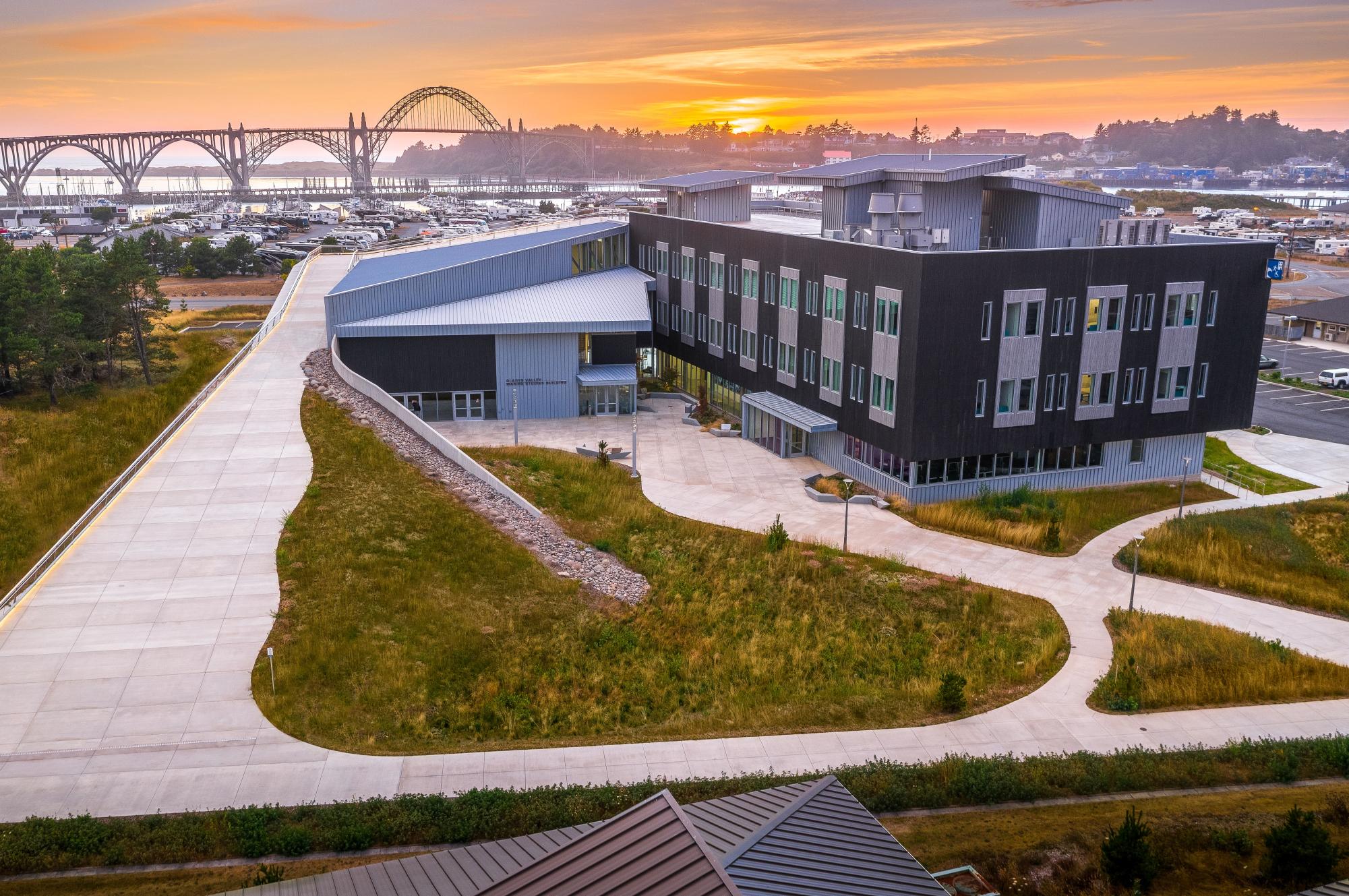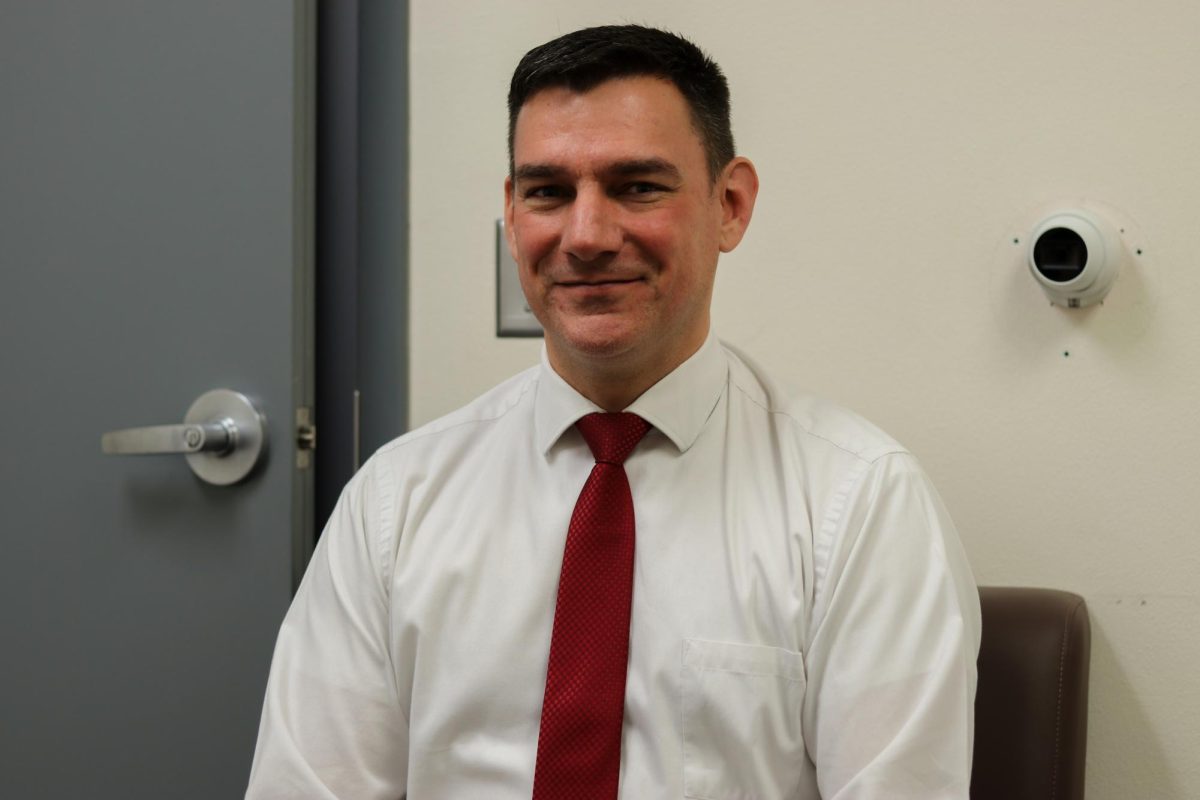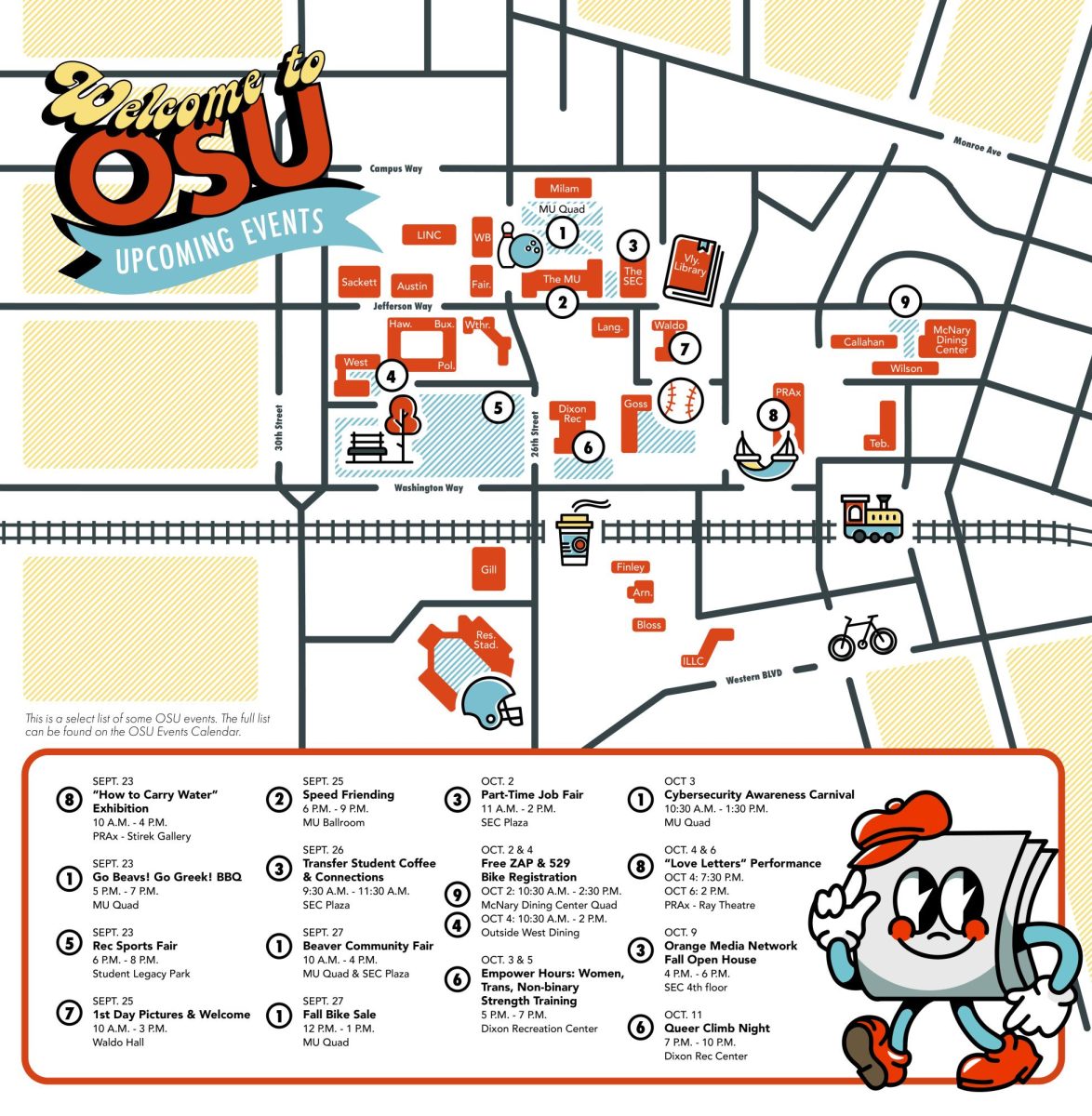Oregon State University’s Hatfield Marine Science Center recently hosted a tsunami evacuation drill to encourage Newport residents to re-evaluate or establish evacuation plans in the event of “The Big One,” and its resulting tsunami.
The drill began at 12:30 p.m. with an announcement text sent out by the HMSC text/email messages system (like OSUAlert). Residents of HMSC, which includes OSU students and faculty, along with residents of the surrounding South Beach peninsula, were encouraged to participate in the drill.
In total, 96 people and two dogs participated, according to Cinamon Moffett, who was in charge of planning the evacuation drill and is a research program manager at Hatfield.
“That’s not a bad number for us, especially since this is kind of the becoming a long weekend,” Moffett said. “But (I’m) happy with those numbers – nearly 100 people. That’s pretty good. When everybody is here … (it’s) at about 400.”
Hatfield hosts three drills every year, one to each of their local assembly areas: Safe Haven Hill (the closest natural high ground), Oregon Coast Community College and the rooftop of the recently constructed Gladys Valley Marine Studies Building.
The drill took place atop the rooftop.
The Gladys Valley Marine Studies Building’s rooftop is a designated tsunami evacuation site. The building itself was designed to withstand a magnitude 9 or higher earthquake and its resulting tsunami. It provides a place for people to evacuate and gather after the tsunami, and there is a cache of supplies to support 920 people for up to two days.
Earthquakes and tsunamis are a major risk up and down the Oregon coast and elsewhere on the Pacific Northwest coast.
Like many coastal areas, Hatfield attracts many tourists but most are not thinking about tsunamis while enjoying their day at the coast, according to Moffett.
“We really want folks to understand that … it’s real,” Moffett said. “Like when we have an earthquake, we will have a tsunami (and) you have to know what to do when the ground starts to shake, and that means you got to go to high ground and you have to know where to go, and the only way to do that is through drills.”
A subduction zone earthquake is what will cause “The Big One” – also known as the Cascadia Subduction Zone Earthquake – many Oregon residents are familiar with.
The Cascadia Subduction Zone earthquake has the potential to be a magnitude 9 or higher with a resulting tsunami of up to 100 feet impacting the coast, according to the Oregon Department of Emergency Management.
Subduction zone earthquakes occur when two tectonic plates are converging, according to Bill Chadwick, senior researcher at Hatfield Marine Science Center.
In the Pacific Northwest’s case, the Juan de Fuca Plate is forced under the North American Plate, resulting in shaking that can last between three to five minutes or even more.
These types of earthquakes result in tsunamis.
During subduction zone earthquakes, the seafloor lifts up, displacing large amounts of water and forcing it upwards, causing large and tall waves – a tsunami.
“It’s important to note that a tsunami is not a single wave, it is a series of waves that last for at least 12 hours or more,” Chadwick said. “The first wave is not necessarily the largest. Tsunamis are like tides in fast-forward, except that they inundate to much higher levels.”
In the case of Newport, the tsunami is expected to arrive within 20 to 30 minutes after the initial earthquake.
“The two most important things are to … survive the earthquake shaking – drop, cover and hold if you are somewhere where things can fall on top of you – or perhaps get out of the building you are in if you can do so quickly and the building is dangerous (it could collapse),” Chadwick said. “Then once the shaking stops (or as soon as you are safely outside) evacuate to high ground (above 100 feet elevation) if you are in the tsunami inundation zone. And stay there until you get an official ‘all clear’.”
The last time the Pacific Northwest experienced a big earthquake was in 1700 – over 300 years ago. It is estimated there is a 10% chance of a magnitude 8 to 9 earthquake in the next 30 years, Chadwick said.
“That means it could happen tomorrow … or it could happen in 200 years,” Chadwick said.


















































































![Newspaper clipping from February 25, 1970 in the Daily Barometer showing an article written by Bob Allen, past Barometer Editor. This article was written to spotlight both the student body’s lack of participation with student government at the time in conjunction with their class representatives response. [It’s important to note ASOSU was not structured identically to today’s standards, likely having a president on behalf of each class work together as one entity as opposed to one president representing all classes.]](https://dailybaro.orangemedianetwork.com/wp-content/uploads/2025/03/Screenshot-2025-03-12-1.00.42-PM-e1741811160853.png)





























